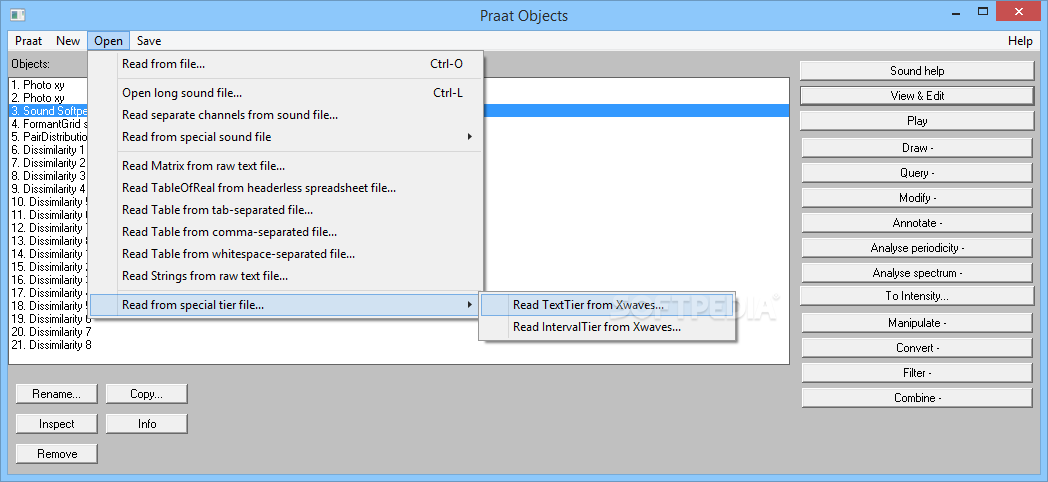

- #Praat download for windows 10 how to
- #Praat download for windows 10 code
- #Praat download for windows 10 free
Windows executable: Media Lengua Database If your textGrids are setup correctly, and as always, if quantum flux is not materializing unwanted bogons into your CPU, this script should, for all intents and purposes give you the following data:Ĭode (optional), Gender, File name, Word, Overall duration, Initial transition duration, Steady state duration, Final transition duration, Initial transition max intonation, Initial transition min intonation, Initial transition max pitch (F0), Initial transition min pitch, Initial transition max F1, Initial transition min F1, Initial transition max F2, Initial transition min F2, Initial transition max F3, Initial transition min F3, Steady state max intonation, Steady state min intonation, Steady state max pitch (F0), Steady state min pitch, Steady state max F1, Steady state min F1, Steady state max F2, Steady state min F2, Steady state max F3, Steady state min F3, Final transition max intonation, Final transition min intonation, Final transition max pitch (F0), Final transition min pitch, Final transition max F1, Final transition min F1, Final transition max F2, Final transition min F2, Final transition max F3, Final transition min F3, Segment, Mid intensity, Mid Pitch, Mid F1, Mid F2, Mid F3, Centre of gravity, Standard deviation, Skewness, Kurtosis, Central movement
#Praat download for windows 10 code
The code herein involves four general steps (1) saving a WAV file (or intensity file) and textGrid as text, (2) using regular expressions to strip away the metadata, (3) plotting the data using R's default plotting functions (4) taking an ungodly amount of time to align the textGrid data. This code will also deconstruct a Praat textGrid file and time align any annotations therein to the wave form or intensity curve.
#Praat download for windows 10 free
If you're interested in normalisation etc., feel free to contact me.
#Praat download for windows 10 how to
The code provided in the appendix of this paper details how to normalise two wave forms and superimpose them for analysis using different colours. This method was originally developed for a paper I co-authored with Martin Kohlberger (currently in-press) to analyse nasality data. This tutorial/ guide/ code (or whatever you want to call it) details how to export sound data from Praat and plot it using R. Plot_ly(z = ~iDensity4) %>% add_surface() IDensity4=data.matrix(iDensit圓, rownames.force=NA)

IDensity=kde2d(Vdata$F1, Vdata$F2, lims=c(range(Vdata$F1),range(Vdata$F2))) Then the data needs to be converted to a 'matrix'. It needs to be converted to a data frame to remove the first two unwanted columns. #Creates a density matrix from the vowel data. Vdata=read.table("%DIRECTORY%/Vowels.txt", header=T) I figure since I've already posted two vowel plotting tutorials, a third isn't necessary. There's only 7 lines of code and the MASS and PLOTLY libraries really do all the work. I'm not going to waste your time with a tutorial on this one. Interactive 3D density plots for vowel visualisation with the PLOTLY and MASS libraries


 0 kommentar(er)
0 kommentar(er)
